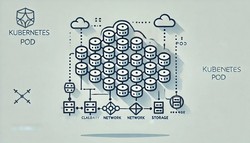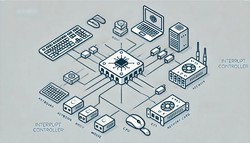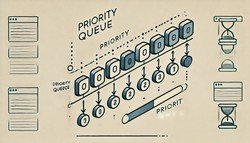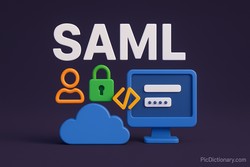Code Injection
 (Representational Image | Source: Dall-E)
(Representational Image | Source: Dall-E)
Quick Navigation:
- Code Injection Definition
- Code Injection Explained Easy
- Code Injection Origin
- Code Injection Etymology
- Code Injection Usage Trends
- Code Injection Usage
- Code Injection Examples in Context
- Code Injection FAQ
- Code Injection Related Words
Code Injection Definition
Code Injection is a type of cyber attack where an attacker introduces malicious code into a vulnerable application or system to alter its execution. This attack exploits weak input validation mechanisms to inject and execute unauthorized commands. Common types of code injection include SQL Injection, Cross-Site Scripting (XSS), and Shell Injection, each targeting different platforms and programming environments. Effective countermeasures involve rigorous input validation, parameterized queries, and the principle of least privilege in software design.
Code Injection Explained Easy
Imagine you have a vending machine that gives you a snack when you press a button. Now, what if someone found a way to press extra buttons in a way the machine wasn't expecting, causing it to give out free snacks? Code Injection works the same way—hackers "press extra buttons" in a program by sneaking in hidden commands, making it do things it wasn’t meant to do, like giving away secret information or taking control of the system.
Code Injection Origin
The concept of code injection has existed since the early days of computing, but it became widely recognized in the late 1990s with the rise of web applications. The infamous SQL Slammer worm in 2003, which exploited a SQL Injection vulnerability, highlighted the dangers of insecure coding practices. Over the years, as internet applications grew, so did the sophistication and frequency of code injection attacks.
Code Injection Etymology
The term "code injection" comes from the idea of "injecting" or inserting unintended code into a program to manipulate its behavior. The word "injection" is borrowed from medical terminology, where a substance is introduced into a body to alter its function—similar to how malicious code alters the function of a software system.
Code Injection Usage Trends
Code Injection remains one of the most common cybersecurity threats. With the increasing complexity of web applications, attackers continuously find new ways to exploit weaknesses. SQL Injection, once the most prevalent form, has seen a decline due to improved security practices, but newer forms like Remote Code Execution (RCE) and deserialization attacks are becoming more frequent. Major cybersecurity firms report that code injection attacks account for a significant portion of security breaches worldwide.
Code Injection Usage
- Formal/Technical Tagging:
- Cybersecurity
- Web Security
- Software Exploits - Typical Collocations:
- "Code injection vulnerability"
- "Preventing SQL injection"
- "Mitigating remote code execution"
- "Exploiting input validation flaws"
Code Injection Examples in Context
- A hacker injects SQL commands into a website’s login form to gain unauthorized access to a database.
- A malicious user inserts JavaScript code into a web form, causing unsuspecting users to execute harmful scripts when visiting the page.
- Attackers exploit a software bug to run unauthorized commands on a server, gaining full control over the system.
Code Injection FAQ
- What is code injection?
Code Injection is a security vulnerability where an attacker inputs malicious code into an application to alter its execution. - What are the common types of code injection?
SQL Injection, Cross-Site Scripting (XSS), Command Injection, and Remote Code Execution (RCE) are common forms. - How does SQL Injection work?
SQL Injection exploits vulnerabilities in web applications to manipulate or extract data from databases using injected SQL queries. - Can code injection attacks be prevented?
Yes, by using input validation, parameterized queries, escaping special characters, and following secure coding practices. - What is Cross-Site Scripting (XSS)?
XSS is a code injection attack where malicious scripts are injected into web pages to execute in users’ browsers. - Why is code injection dangerous?
It can lead to data breaches, unauthorized access, system takeover, and financial losses.
Code Injection Related Words
- Categories/Topics:
- Cybersecurity
- Web Security
- Software Exploits
Did you know?
One of the largest data breaches in history, the 2017 Equifax hack, was caused by a code injection vulnerability in a web application. Attackers exploited an unpatched flaw in Apache Struts to gain access to sensitive data of 147 million people, leading to massive financial and reputational damage.
Authors | Arjun Vishnu | @ArjunAndVishnu

PicDictionary.com is an online dictionary in pictures. If you have questions or suggestions, please reach out to us on WhatsApp or Twitter.
I am Vishnu. I like AI, Linux, Single Board Computers, and Cloud Computing. I create the web & video content, and I also write for popular websites.
My younger brother, Arjun handles image & video editing. Together, we run a YouTube Channel that's focused on reviewing gadgets and explaining technology.
















Comments (0)
Comments powered by CComment